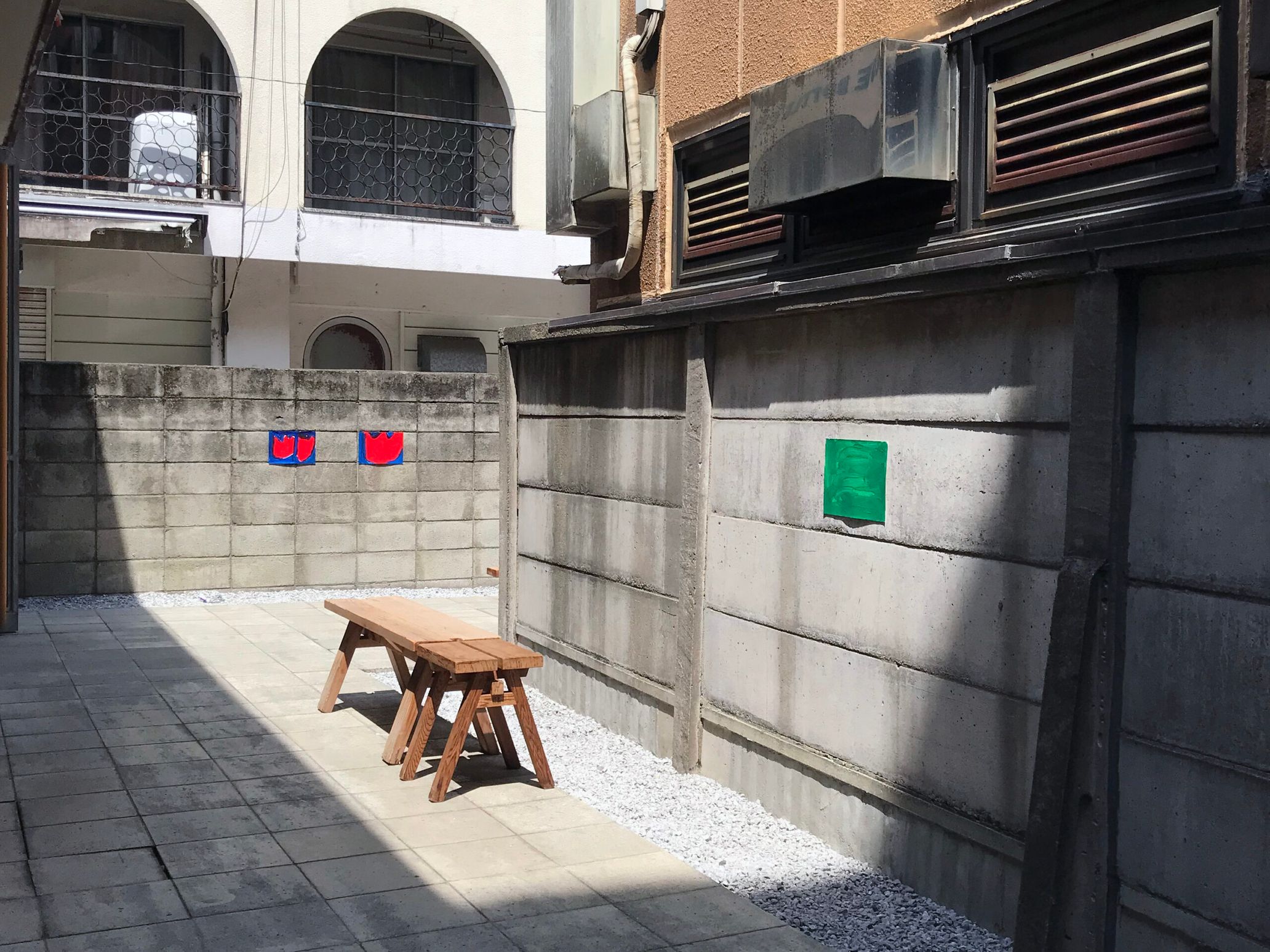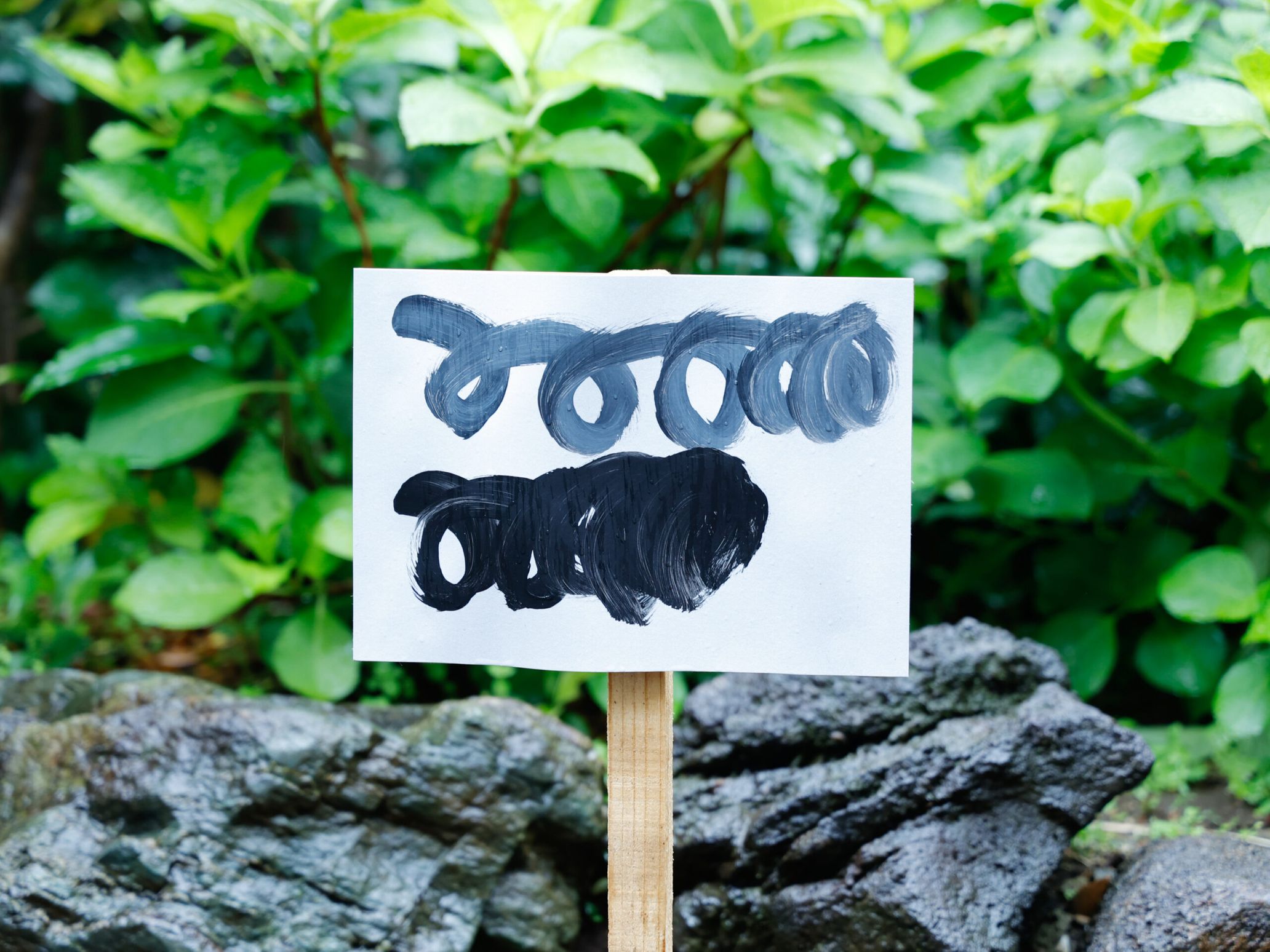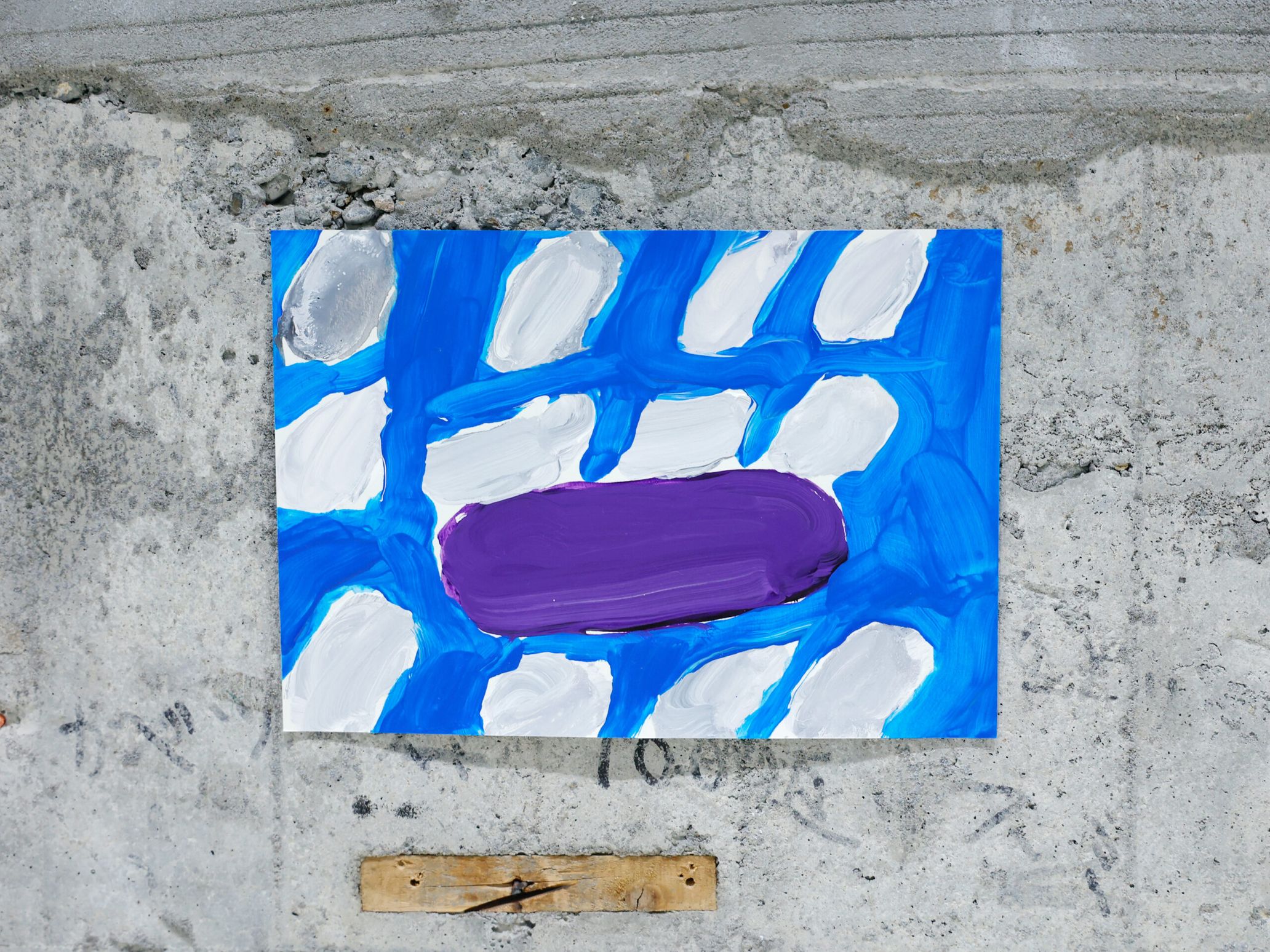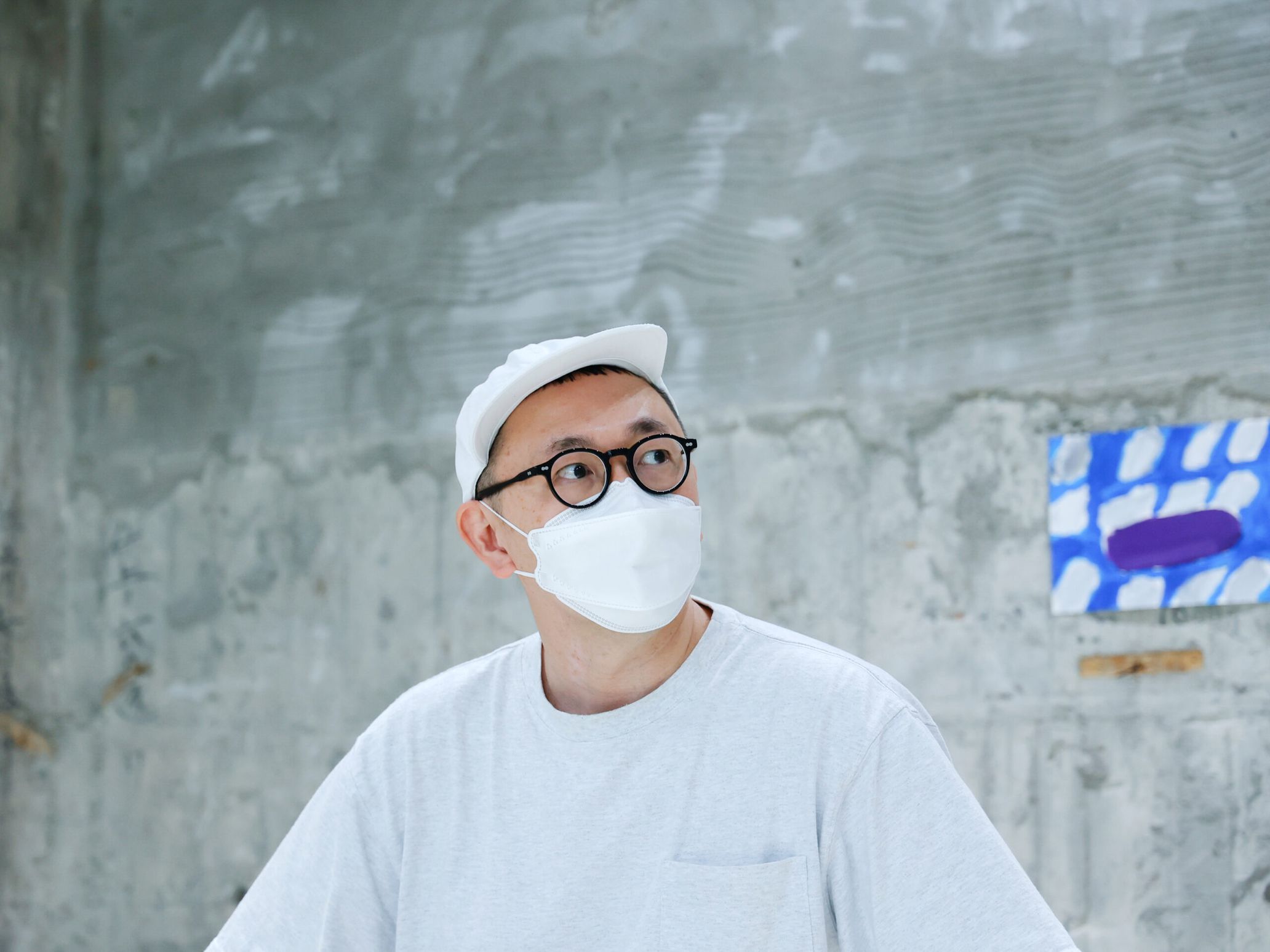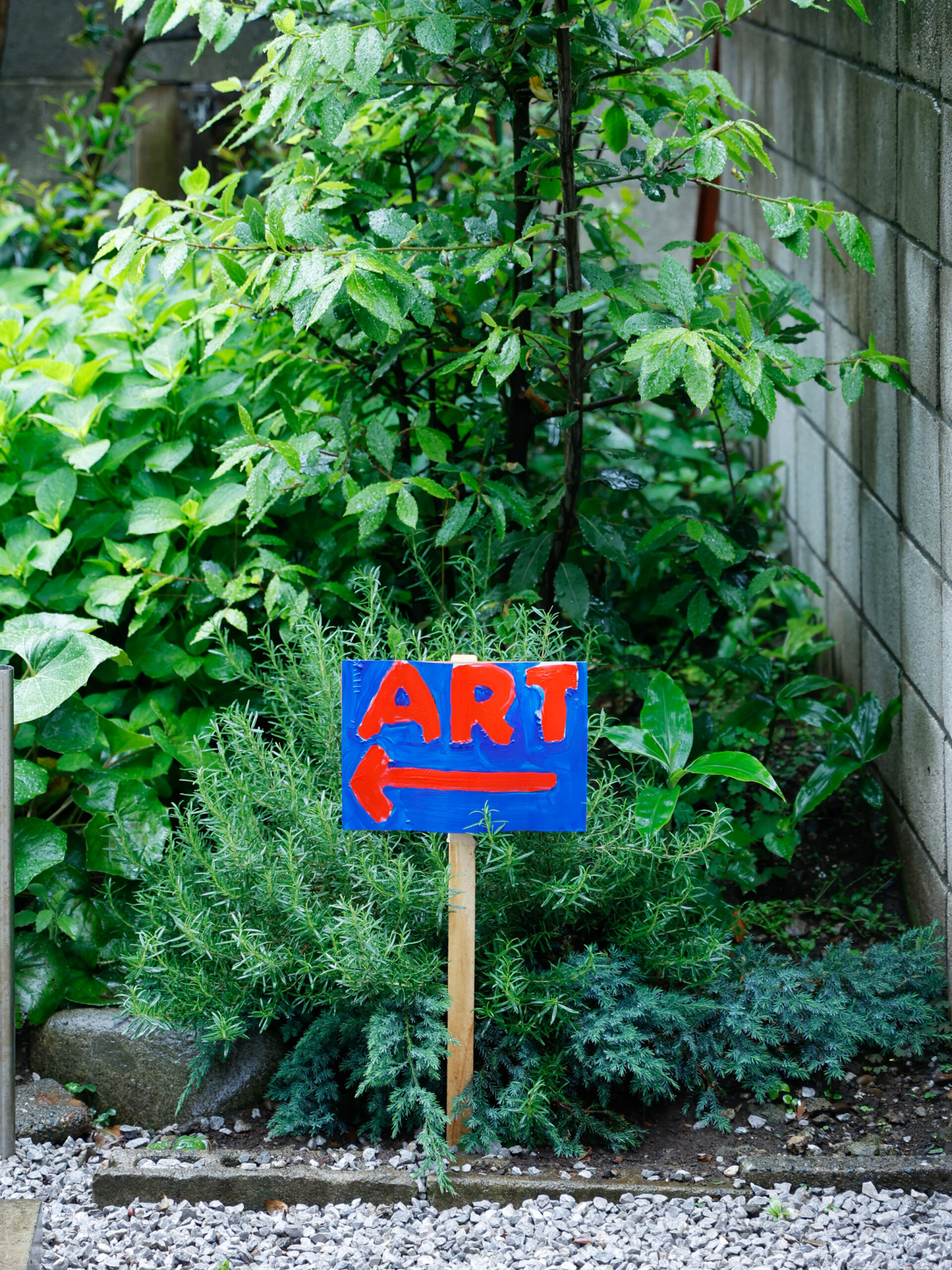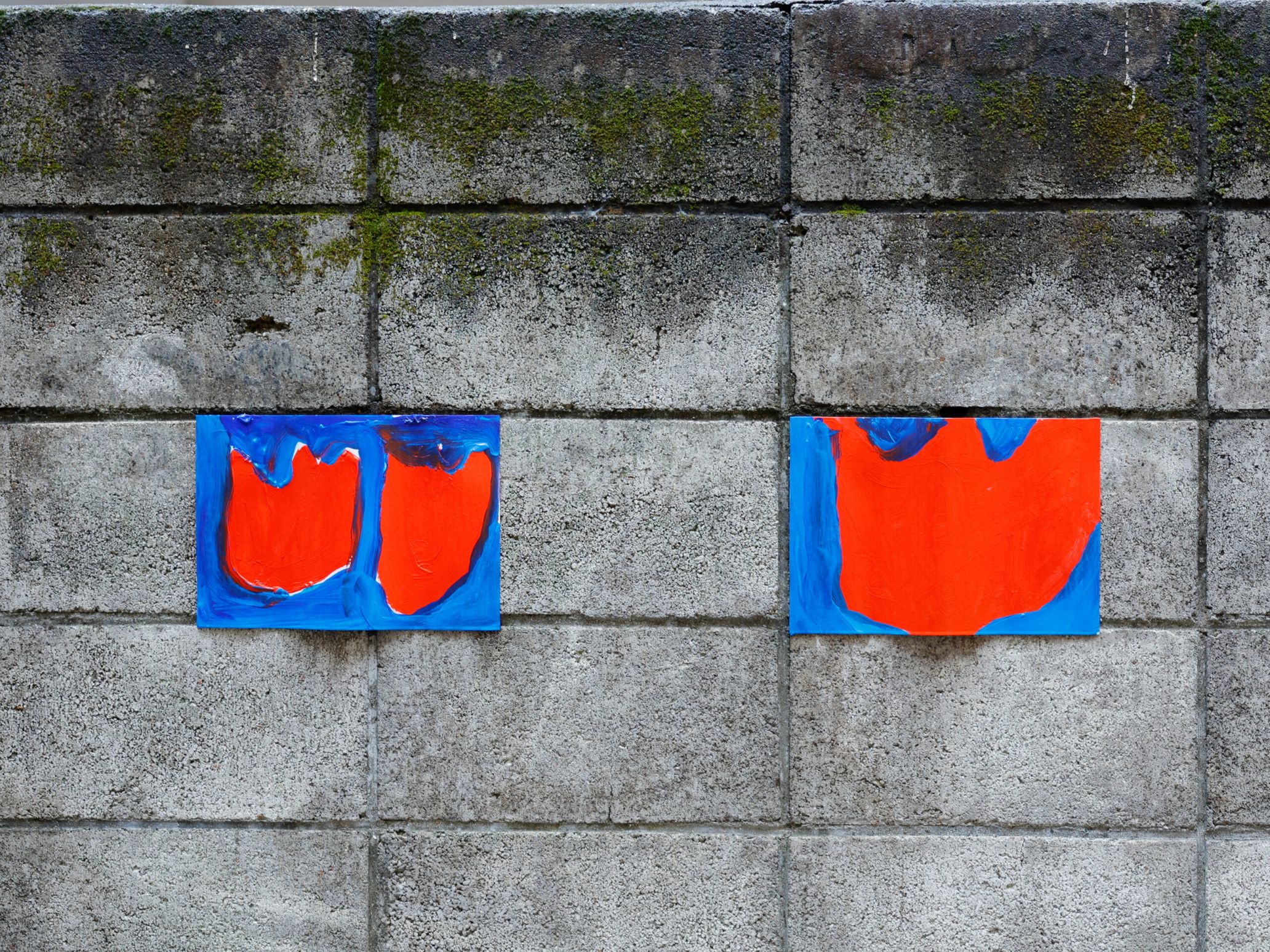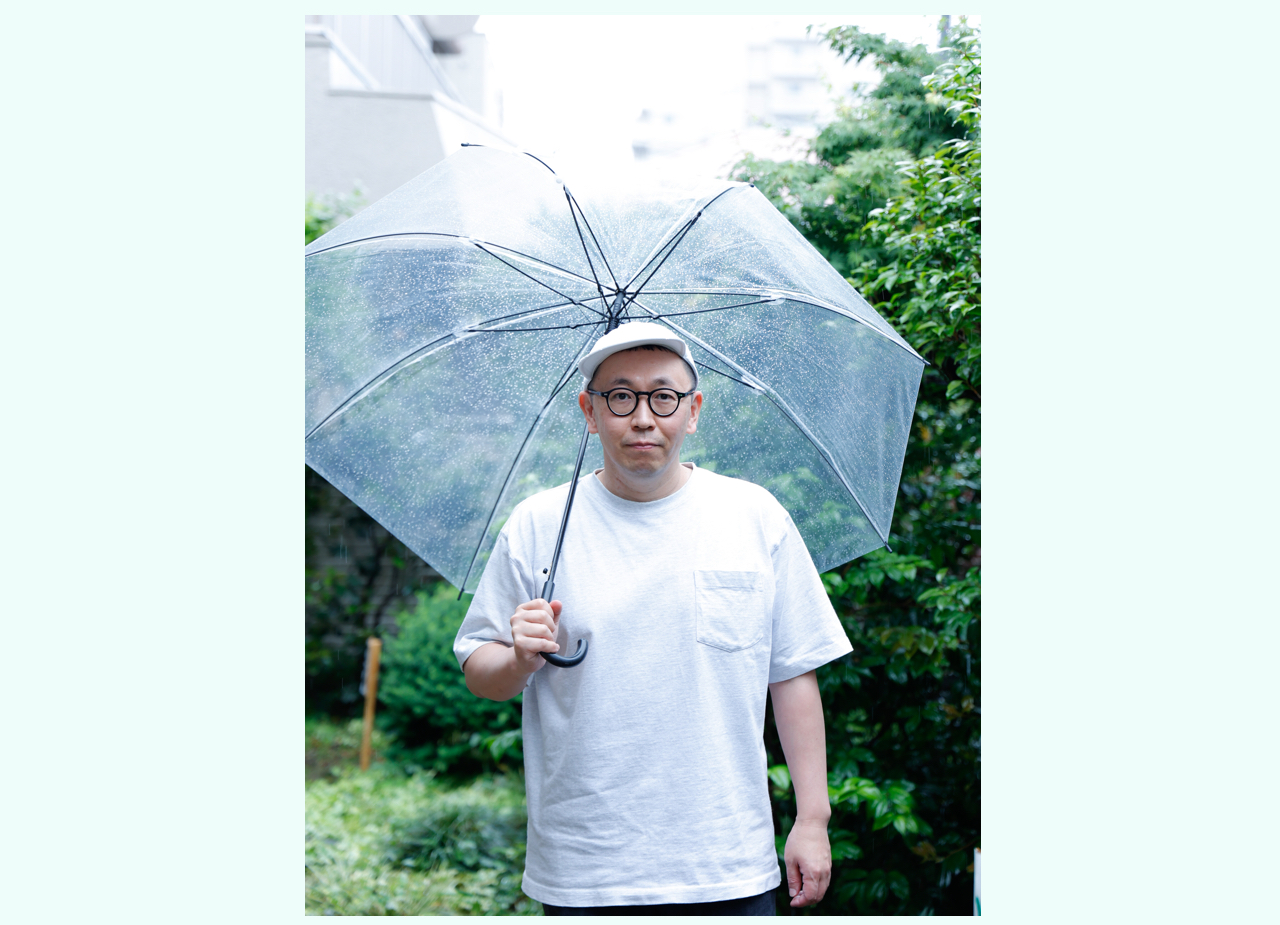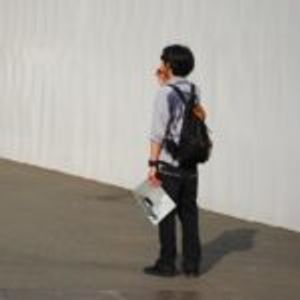What changes when paintings are exhibited outdoors for a month? Hirayama’s solo exhibition, “Machi No E (Painting of the Town)” incorporates ideas that go against the conventional thought that paintings shouldn’t be exposed to ultraviolet rays or humidity. The exhibition is at Clinic Gallery in Sangenjaya until June 5th.
The works that reflect Masanao Hirayama’s inimitable worldview are displayed inside the gallery, on the walls, and in the garden of this exhibition. Why did Hirayama also decide to display his artwork outside? And how does he feel about the changes his pieces have undergone? We ask Hirayama these questions while his works get soaked in the rain.
The town bulletin board made me want to display work outdoors
©︎clinic
——“Machi No E (Painting of Town)” features innovative ideas like displaying your works outdoors. Please tell us how this exhibition came about.
Masanao Hirayama(Hirayama) : You’ve seen flyers and posters on town bulletin boards that have lost their color, all worn and rippled because of its exposure to rain and wind. I’ve been wanting to exhibit works that would be exposed to such changes for several years.
——Does that mean that things that are normally overlooked by most people catch your eye? Was this exhibit planned around the outdoor displays?
Hirayama: It was initially planned as an indoor exhibition at the gallery. The scale of the exhibition was later expanded to include not only the gallery, but also the gallery’s garden and the adjacent Blue Bottle Coffee, resulting in an indoor/outdoor exhibition.
——I think many people think of the motifs with thin lines, seen as a graphic on some T-shirts, as your signature style. None of those works are on display at this exhibition.
Hirayama: It depends on the occasion. This time around is a painting exhibition.
——I see. What were your influences in creating the paintings in this exhibition?
Hirayama: Several of these paintings have weather motifs.
——There are two swirly paintings outside. Is there an event related to those pieces?
“Untitled” (2022) 21cm x 29.7cm Acrylic on paper
“Untitled” (2022) 21cm x 29.7cm Acrylic on paper
Hirayama: The swirls are abstract. They’re displayed in front of the plants like a sign. It also happens to look like the plants’ names are written on it.
——Now that you mention it, it’s starting to look like a sign for the plants (laughs). It’s rare to have the opportunity to display paintings outdoors. Were there any differences in the way you drew depending on where it was going to be displayed?
Hirayama: It was the same as usual. When I was choosing which pieces to place where, I decided to put the paintings I drew on rainy days indoors and the rest outside. The subjects of the paintings I drew on rainy days are objects found in or seen from my home.
“Ame, Nasu” (“Rain, Eggplant”) (2022) 21cm x 29.7cm Acrylic on paper
——Did you use special paper or supplies for the paintings displayed outside?
Hirayama: I painted on drawing paper or cardboard and acrylic paint for both the indoor and outdoor paintings.
——I was surprised that there were only three paintings inside the gallery.
Hirayama: I wanted to have the same density of works both indoors and outdoors, which resulted in having three pieces inside.
The rain is a blessing. I hope it rains more (laughs)
——It’s been a week since the exhibition started (the interview was on May 13th). How do you feel about the changes you’ve seen so far?
Hirayama: The works displayed outside have gradually changed. There were no changes two days ago, but the paper is warped today, probably because of yesterday’s rain. There were also insect tracks and a slug on the painting with the blue flower.
——Those are some interesting changes (laughs). Has the process been as expected so far?
Hirayama: An unexpected change was the acrylic paint on the “ART” painting popping out.
——What would you do if one of your paintings was torn during the exhibition?
Hirayama: I would fix it depending on its condition. If it falls to the ground, I would put it back up.
——Is there a reason why this exhibition happened in May? Every year, May seems to be mostly sunny since it’s right before the rainy season. Although it rained a lot today.
Hirayama: It’s the time of year when there are many people. I want to see how the paintings change, so today’s rain is a blessing. I hope it rains more (laughs).
“ART” (2022) 21 cm x 29.7 cm Acrylic on paper
——It’s exciting to see how your paintings will change throughout the exhibition. I’m sure most of the visitors have never experienced an exhibition where they can see changes in the artwork. How has the reaction been?
Hirayama: It would be great if the people coming in for coffee show interest.
——It seems like someone has already purchased one of your outdoor pieces. How do you plan to hand it to the buyer?
Hirayama: The painting will be given to them in the condition it’s in at the end of the exhibition. I can frame it, as well.
——Most people often buy a piece because they like it at the time they see it. But the chance of the artwork having changed by the time it arrives at their home is also a novelty in this case.
Hirayama: The person who bought the painting in the garden chose it by looking at it from inside the Blue Bottle Coffee shop.
“Funsui” (“Fountain”) (2022) 21 cm x 29.7 cm Acrylic on paper
Left: “Hana” (“Flower”) (2022) 21 cm x 29.7 cm Acrylic on paper
Right: “Hana” (“Flower”) (2022) 21 cm x 29.7 cm Acrylic on paper
——There may be some people who come see your show after reading this interview. How do you want them to look at the works that have changed over time?
Hirayama: I’d like them to acknowledge the changing of time while looking at the outdoor paintings.
——Those who came at the start of the exhibition may enjoy the changes if they come again towards the end.
Hirayama: Some of the Blue Bottle Coffee regulars may notice the changes over time.
——Can I ask one last question? I’ve been wondering this the whole time, but is your name written on your sneakers?
Hirayama: Yes. And the date I purchased the shoes is written on my left shoe. I often buy the same things, so I’ve been writing my name and the purchased date on my belongings. It’s convenient to track when it was bought.
——It’s brave of you to write it somewhere so visible.
Hirayama: I thought it would be useful, because the TV at my parents’ house has the date written on it with a magic marker. Writing your name on something makes you feel attached to it, too. There are commonalities to this exhibition as it tracks the changes in time.
Masanao Hirayama
Born in Hyogo Prefecture in 1976. Has exhibitions in Japan and abroad. His solo exhibition “Machi No E (Painting of the Town)” is on display at Clinic Gallery in Sangenjaya until June 5th.
https://www.himaa.cc
Instagram:@masanaohirayama
■Masanao Hirayama “Machi No E (Painting of the Town)”
Duration: Until 6/5
Venue: Clinic / Blue Bottle Coffee Sangenjaya Cafe
Hours of Operation: 11:00-17:00 (cafe and garden displays from 8:00-19:00)
※ Entry to the gallery is by appointment only on weekdays (contact via Instagram DM @clinic_tokyo)
Hosted by: Clinic
Co-planning / curation: Yu Murooka
Special cooperation: Blue Bottle Coffee Japan
http://www.clinictokyo.com
Photography Shinpo Kimura
Text Kango Shimoda
Translation Mimiko Goldstein


